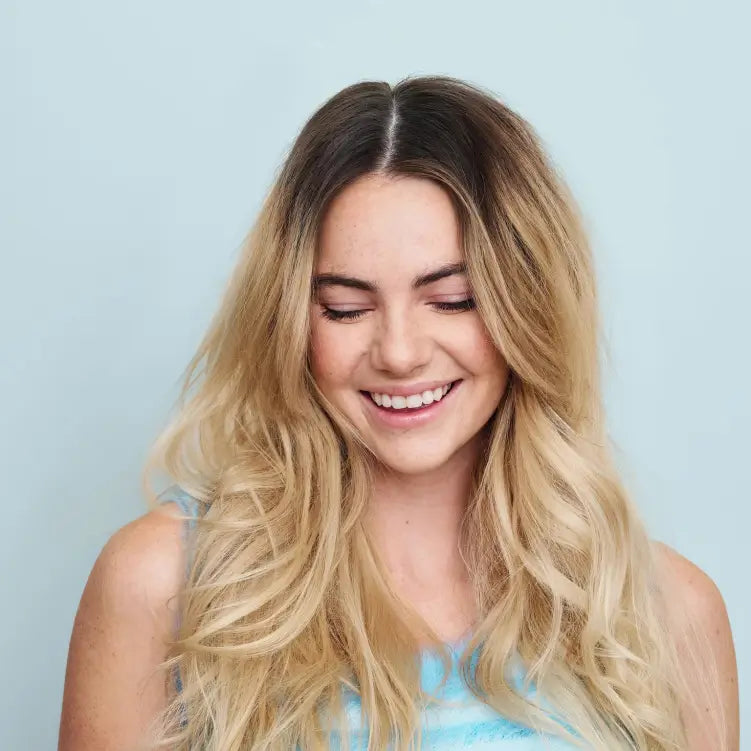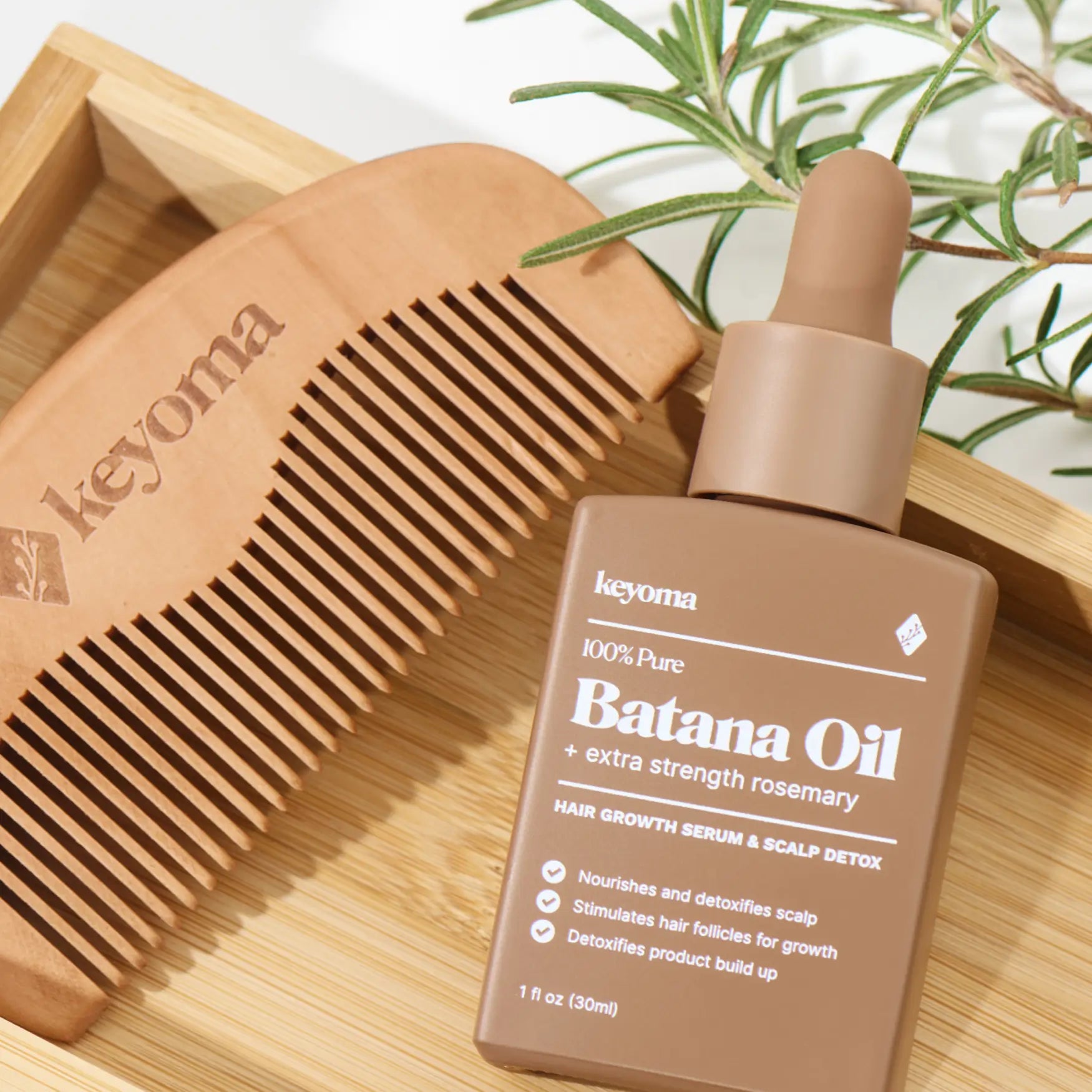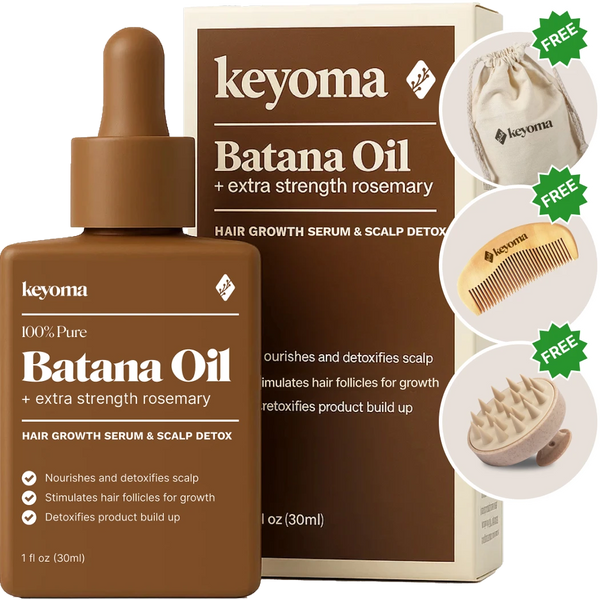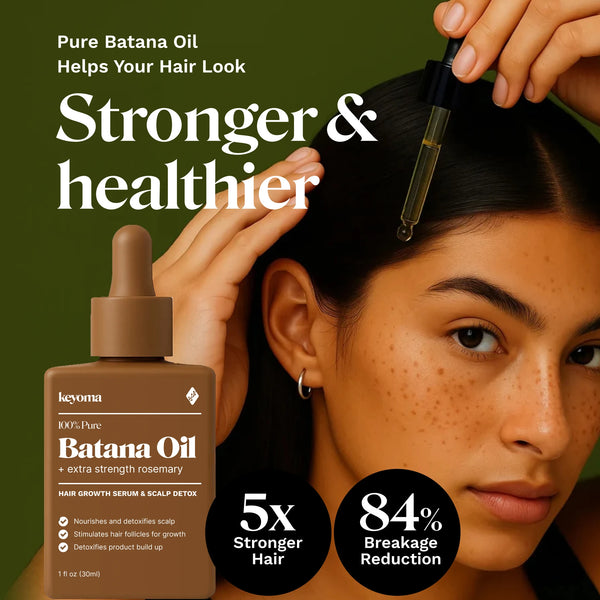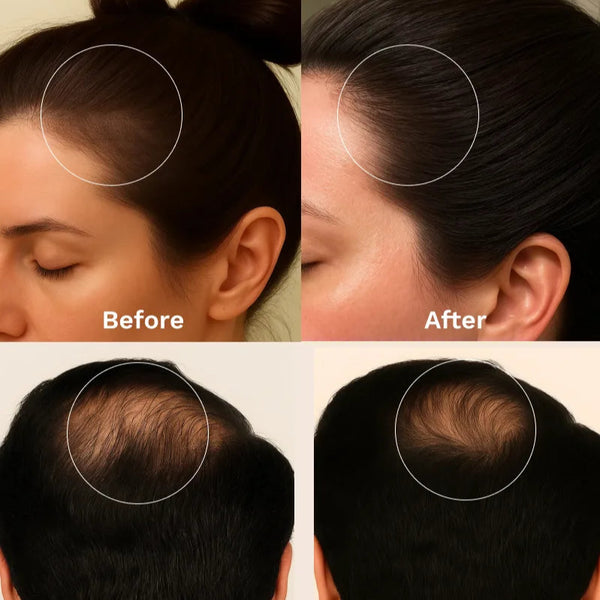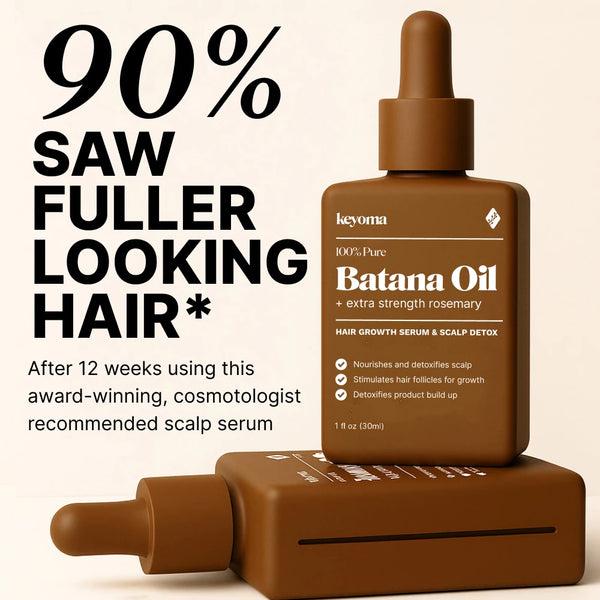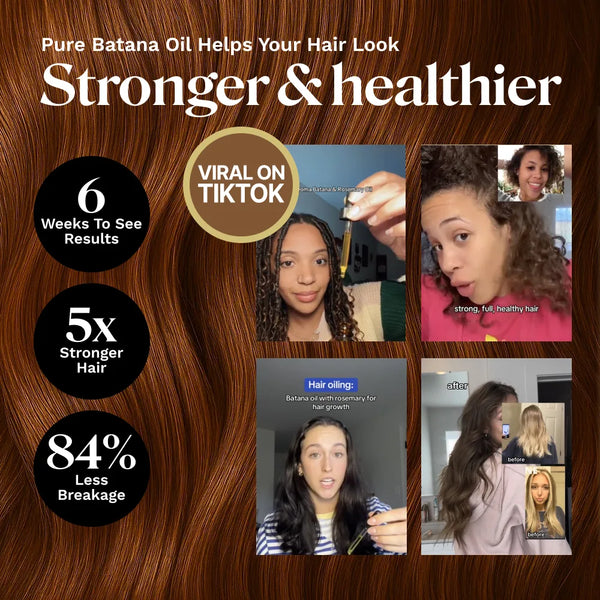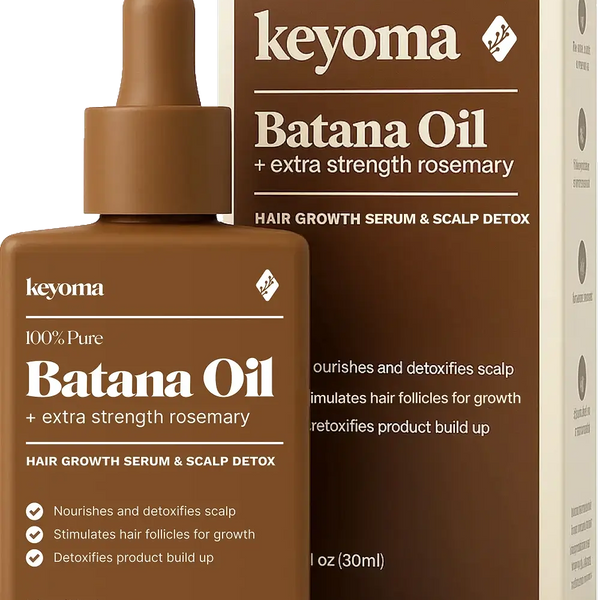In this article
Some people are born with that full, bouncy, naturally thick kind of hair that somehow still looks perfect after a nap, and good for them.
But if you’re on the thinner side of the gene pool, you know the constant struggle of trying to hide your scalp, fluffing up your roots for the hundredth time, or praying your hair doesn't fall flat before that brunch date.
That's why in this article, I’ll share practical ways to make thin hair look thicker, from the right cuts and colors to styling tricks and daily habits that get the job done. Let’s get into it!
How to Make Thin Hair Look Thicker
Use Thickening Shampoo and Conditioner
If your goal is to make thin hair look thicker starting in the shower, this is where to begin.
Shampoos and conditioners labeled as thickening, volumizing, or densifying are usually formulated to coat each strand with lightweight film-formers (like hydrolyzed proteins or panthenol), which plump up the shaft temporarily and make hair appear fuller.
Many also use ingredients like rice protein, biotin, caffeine, or pea peptides, all of which improve the look and feel of hair density over time by supporting the scalp environment and adding strength at the root level.
That brings us to an important question: what shampoo to avoid with thin hair?
Do away with anything that’s labeled “moisturizing,” “repairing,” or “smoothing” and packed with heavy silicones or oils.
On fine or thinning strands, they can flatten volume and leave hair looking limp just hours after washing. That said, these are better suited for thick, coarse, or curly hair types.
Use a Hair Fiber Spray
Hair fiber sprays contain tiny, pigmented keratin-based fibers that cling to your natural hair through static electricity. Once attached, they instantly bulk up each strand, fill in sparse areas, and reduce visible scalp exposure.
The best part is how seamlessly they blend with your hair’s natural color and texture—completely undetectable once applied. In under 30 seconds, they deliver a noticeable lift in density and volume that still looks natural.
All that said, how you apply it can make or break the result.
The most common mistake is spraying too close to the scalp or applying it on oily, unwashed hair, both of which cause clumping and uneven patches.
Instead, apply to clean, dry hair. Hold the spray about 4–6 inches away, then gently pat with your fingers for even coverage. If you’re filling in a receding hairline or crown, use a precision nozzle or hairline stencil for better control.
Use Root-Lifting Products
Root-lifting products are lightweight mousses, sprays, or foams applied directly to the roots before styling. They give your hair structure at the base, so strands don’t lie flat against the scalp.
But what gives them that ability? Root lifters contain polymers that stiffen slightly as they dry, providing just enough “hold” and upright support at the roots.
This lift at the base creates the illusion of more volume and makes your overall hair look fuller and denser, without feeling stiff or sticky.
Again, application technique is key. The trick is to work in sections while your hair is still damp. Focus on the crown or areas where you want lift, and use a round brush or your fingers while blow-drying to shape the volume as it sets.
And this technique isn’t just for women. If you’re looking up how to style thin hair (male), you’ll be glad to know it works just as well for creating a clean, buildable lift in shorter cuts.
Choose Haircuts That Add Volume
Especially for thin, fine strands, the right haircut transforms that flat, heavy weight that drags everything down into hair that feels fuller, lighter, and more alive.
So, “What hairstyles look best for thin hair?” Below are five that do the trick. What’s more, these picks don’t just add volume. They also fall under the low-maintenance category if you choose the right length and layering:
-
Bob
-
Shoulder-Length Lob
-
Soft Layered Shag
-
Curtain Bangs
-
Pixie Cut
If you ask me, “What’s the best haircut for very thin hair?”, I’d honestly go for a shoulder-length lob. I’m someone who’s too attached to her length to go for a full chop. Though, interestingly, most of my friends tend to lean towards the clean, blunt bob.
That said, even the best cut won’t do much if it’s done by someone who doesn’t understand texture or growth patterns.
So let me say this clearly: find a great stylist or barber. Someone who actually listens, studies your hair type, and shapes it in a way that works with it, not against it.
Switch Your Part
When you wear the same part day after day, your hair gets used to falling in that direction. Over time, it flattens out and, in some cases, even exposes more scalp than you’d like.
By flipping your part to the opposite side, or trying a zigzag or off-center part, you break that pattern. The change immediately lifts the roots, creates a natural puff, and adds height where your hair used to lie flat.
For this reason, I’d call this technique a quick hack that gets the job done. It practically costs nothing, takes seconds, and makes a huge difference.
To get the most out of it, switch your part while your hair is still damp, then blow-dry in the new direction. This helps lock in the shape while encouraging volume at the root.
Blow Dry Upwards
Blow-drying upwards is one of those old-school salon tricks that’s stood the test of time. In this case, the upstream airflow helps lift the strands at the root while they dry, creating that instant lift and volume.
If you’re using a round brush while doing this, you’re also adding shape and bounce that lasts all day. Finishing with a blast of cool air can help set everything in place.
Consider Coloring Your Hair
Hair coloring works its magic through optical illusion. It plays with light and contrast to make thin hair appear fuller, giving what would otherwise be flat, fine hair more movement and life.
However, it’s the right coloring technique that really does the trick. The goal is to create depth, contrast, and texture so strands look more voluminous than they actually are.
That leads us to the question: what color makes thin hair look thicker?
Generally, going a shade darker than your natural base, especially around the roots, adds visual density. Think shadow roots or soft brown lowlights against a lighter base. These help disguise scalp exposure and make the hairline appear fuller.
On the other hand, be cautious with full-head bleach or ultra-light tones if your hair is already thinning. Lightening agents like ammonia and peroxide swell the cuticle to lift pigment, which can weaken fragile strands over time.
If you decide to go lighter, balance it out with a strengthening protein mask or a bond-repair treatment to keep your hair’s strength intact.
Consider Hair Weaves and Extensions
Hair weaves and extensions instantly boost the appearance of density and volume by physically adding more strands to your existing hair.
It’s really simple how it works. Clip-ins, for instance, can be snapped on at home in under five minutes. Tape-ins and halo extensions are just as easy and are often the go-to for those who want something low-maintenance yet seamless.
And you don’t have to worry about them looking fake. Most modern extensions are made from either real human hair or high-quality synthetic fibers that mimic the texture and feel of natural strands. They blend in beautifully, often indistinguishable from your own hair.
Now, something I often hear is, “Won’t extensions damage fine hair?” They can, but only if applied incorrectly or neglected over time.
Fine hair is delicate, and heavy or tightly attached extensions can strain the scalp, leading to breakage or even traction alopecia. The trick is to go for lightweight options (like hand-tied wefts or halo extensions) and work with a stylist who understands fine textures.
And a few more reminders when it comes to weaves and extensions:
-
Avoid sleeping with wet extensions
-
Always detangle gently using a soft-bristle brush, starting from the ends and working upward.
-
Don’t skip your maintenance appointments as they’re key to preventing matting, pulling, or unnecessary stress on your strands.
Common Mistakes That Make Hair Look Thinner Instead
Sometimes, it’s not about what you do to make your hair look thicker, but what you unknowingly do to sabotage it. So if you’ve ever asked yourself, “What not to do with fine, thin hair?”, here are the biggest habits to drop:
-
Don't apply heavy styling products: Thick gels, waxes, and heavy creams weigh down delicate strands, rob them of volume, and make your scalp more visible.
-
Don't forget heat protectant when heat styling: Fine hair is more vulnerable to heat damage. Skipping a protectant leads to breakage and frizz, which makes your hair look thinner over time.
-
Don't use tight hairstyles: Constantly pulling your hair into tight ponytails, slicked-back buns, or braided styles can stress the roots and lead to traction alopecia.
-
Don't overbrush or overwash: Brushing too hard or washing too frequently strips your scalp of natural oils, dries out the shaft, and causes mechanical damage over time.
-
Don't overdo dry shampoo: It might be your volume hack, but daily use leads to buildup that clogs follicles and weighs roots down, giving the opposite of what you’re going for.
How to Actually Grow Thick Hair
By now, we’ve covered all the ways you can make thin hair look thicker, and that’s great, especially if you're pressed for time or just need to look good in the moment. But that’s exactly what those tricks are: visual, temporary, styling-based solutions.
If you want to actually grow thick hair—long-term, naturally, and sustainably—focus on the approaches below which can help rebuild density from the inside out:
Natural Hair Nourishing Oils
If you’re wondering how to make your thin hair thicker naturally, start with hair-nourishing oils.
Oils like rosemary, batana, castor, and peppermint contain properties that help stimulate circulation at the scalp, reduce inflammation, and support overall follicle health.
They also hydrate both the scalp and the hair shaft, helping strands retain elasticity and resist breakage. That means not just encouraging new growth, but also keeping the hair you already have looking strong and full.
For best results and maximum absorption, massage a few drops of oil into your scalp daily.
Lab-Tested Medical Treatments
While natural oils are a great support, medically approved treatments offer some of the strongest evidence for growing actual hair thickness, especially in cases of genetic or hormonal thinning. Your options include:
-
Topical minoxidil: Increases blood flow to the follicles and extends the growth phase. Available over the counter.
-
Oral medications (like finasteride): Primarily blocks DHT, a hormone linked to male and female pattern hair loss.
-
Low-Level Laser Therapy (LLLT): Uses light therapy to stimulate follicles and boost cellular energy.
-
Platelet-Rich Plasma (PRP): Involves injecting concentrated platelets from your own blood into the scalp to stimulate hair growth.
-
Hair Transplant Surgery: A more permanent but invasive solution, where healthy follicles are moved to thinning areas.
Stress Management
Chronic stress raises cortisol levels, which can push your follicles into resting mode (aka telogen effluvium). That’s why people often notice hair shedding after a big emotional event, illness, or life transition.
Now, stress management doesn’t directly make your hair thicker, but it does help you hold onto what you already have.
If your hair is naturally thick but shedding from stress, practices like these can slow that fallout, giving your strands the time and environment they need to grow longer and stronger over time.
Daily movement, journaling, quality sleep, breathwork, and even short breaks during the day help regulate cortisol and keep your follicles from shutting down prematurely.
Complete & Proper Nutrition
Hair is made mostly of keratin, a type of protein. That means poor diet equals poor hair structure. To grow hair that’s thick and strong, you need enough of the following nutrients:
-
Protein
-
Iron and zinc
-
Omega-3 fatty acids
-
Biotin & B vitamins
-
Vitamin D
-
Vitamin C
Check out Keyoma's guide on Best Foods for Hair Growth for a more in-depth view of what to put on your plate during mealtime.
Frequently Asked Questions (FAQs)
Can thin fine hair become thick?
Your hair’s thickness is largely determined by genetics. So if you come from a line of thin, fine hair, chances are you’ll have the same.
However, you can absolutely make it look thicker through the techniques we discussed earlier, along with consistent hair care habits like using nourishing oils, eating a balanced diet, and managing stress.
How can I make my thin fine hair look thicker?
To make thin, fine hair look thicker, use root-lifting products, thickening shampoos, and smart styling tricks like switching your part or blow-drying upwards.
Does cutting hair short make thin hair look thick?
In many cases, yes, cutting hair short does make thin hair look thick. Shorter styles like blunt bobs or pixie cuts reduce weight, create structure, and visually enhance volume, especially when paired with a clean, even finish at the ends.
Maintain the Health Behind That Thick-Hair Look
Even if you achieve the thick-hair look you want, it won’t look healthy without proper care. Thick or thin, hair that’s dull, brittle, or dry never quite gives that effortless shine and movement. That’s why prevention matters just as much as styling.
Hair oils are a must in this area. They keep your scalp balanced, your strands elastic, and your ends protected—no matter your hair type.
And if you're just starting out, go for Keyoma’s Batana Oil infused with Rosemary. It’s lightweight, deeply nourishing, and fits right into any routine.
Try it today and see how even the finest hair can start to feel stronger, smoother, and just a little more like the thick, healthy hair you’ve been aiming for.
Featured Product
100% Pure Batana Oil + Rosemary
↓Best Batana Oil to Buy↓
1 Month
Subscribe & Save
- 30-day supply delivered monthly $35
- 30% off for life $6
- Free haircare essentials kit $33
- Free custom wooden comb $10
- Free scalp massager $15
- Free eco-friendly travel bag $8
- 30-Day Money Back Guarantee
- Free Shipping
- Online portal for easy cancel, skip, or pause.
1 Month One Time Purchase
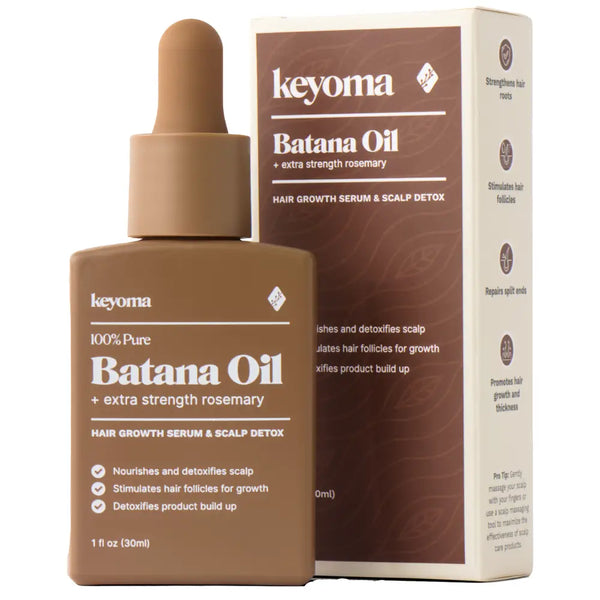
- 30-day supply $50
- 30% off for life $6
- Free haircare essentials kit $33
- Free custom wooden comb $10
- Free scalp massager $15
- Free eco-friendly travel bag $8
